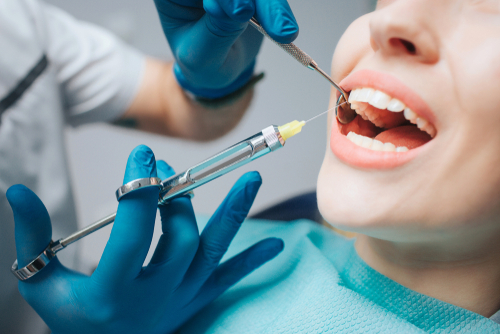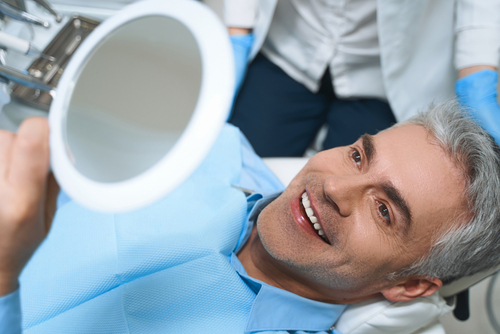Understanding Sedation and Pain Management in All-on-4 Procedures
Imagine transforming your smile completely in just one day. That’s the power of All-on-4 dentures, a revolutionary approach in restorative dentistry that secures a full arch of new teeth on just four implants. Whether it’s for your upper or lower jaw, this procedure offers a transformative makeover quickly, right here in Rancho Bernardo and the area.
Yet, the thought of undergoing any dental procedure often brings up concerns about discomfort. By getting to know the sedation techniques used here and setting clear expectations for the process, you can ease those worries, making your journey to a new smile a breeze.
What kind of anesthesia is used for All-on-4 dentures?
 Let’s take a closer look at the different types of dental anesthesia you might encounter during your All-on-4 procedure.
Let’s take a closer look at the different types of dental anesthesia you might encounter during your All-on-4 procedure.
Local anesthesia for minor procedures
For All-on-4 dental implant procedures, which are more complex and extensive, local anesthesia alone typically isn’t enough to ensure patient comfort throughout the surgery. Rather, it’s typically reserved for less extensive dental work like fillings or taking out wisdom teeth. You might encounter it as a gel, cream, spray, or injection. But, no matter the form, its job is to numb your tooth, gums, and nerve endings, ensuring you’re comfortable and pain-free during the procedure.
General anesthesia
General anesthesia is often the go-to for longer, more complex procedures, making sure patients get through them smoothly and without any pain. It’s the most intense form of sedation, typically used for serious steps like bone grafting. Sometimes, during the dental implant process, there might not be enough healthy bone to anchor the implants properly, and that’s where bone grafting comes in. With general anesthesia, you’ll be completely out—unconscious and with no memory of the procedure afterward.
Nitrous oxide for dental anxiety
For All-on-4 dental implant procedures, this sedition type might be used as part of the sedation plan to help manage anxiety and discomfort. Commonly referred to as “laughing gas,” nitrous oxide might not actually have you cracking up. It got its nickname because it can make some folks feel a bit euphoric. Delivered through a mask that fits over your nose, it helps slow down your nervous system, making you feel more relaxed and at ease. Even though you’ll stay awake during the procedure, you’ll likely feel calm, a bit detached, and completely comfortable. Don’t be surprised if you also experience tingling, a sense of light-headedness, or a heavy feeling in your arms and legs.
How can I make my dental implants heal faster?
It’s normal to expect some pain, but it can be greatly minimized with the right strategies. Relief often starts with prescribed painkillers, which might be anything from the ibuprofen or acetaminophen you pick up at the store to stronger meds that require a prescription.
Home remedies also do wonders in managing post-op pain and swelling. Applying ice packs will numb the area, while sticking to soft foods and avoiding direct chewing helps prevent additional irritation. Taking it easy with your dental care routine, including brushing lightly and rinsing with saltwater, also plays a big part in healing and avoiding infections.
 Where’s the best spot for All-on-4 dentures in Rancho Bernardo & the area?
Where’s the best spot for All-on-4 dentures in Rancho Bernardo & the area?
If you’re looking for more details about anesthesia in dental implant procedures, feel free to reach out. Dr. Tsvetov is not just knowledgeable; he’s also a great listener. He ensures that every dental appointment, no matter the challenges it presents, is a step towards achieving your oral health goals. If you’ve got any concerns or questions, be it about the procedure’s duration or the post-operative instructions, we’re more than ready to address them. Just give us a ring and arrange a consultation that fits into your schedule, no matter where you are in San Diego!
Comments are closed.


 Where’s the best spot for All-on-4 dentures in Rancho Bernardo & the area?
Where’s the best spot for All-on-4 dentures in Rancho Bernardo & the area?